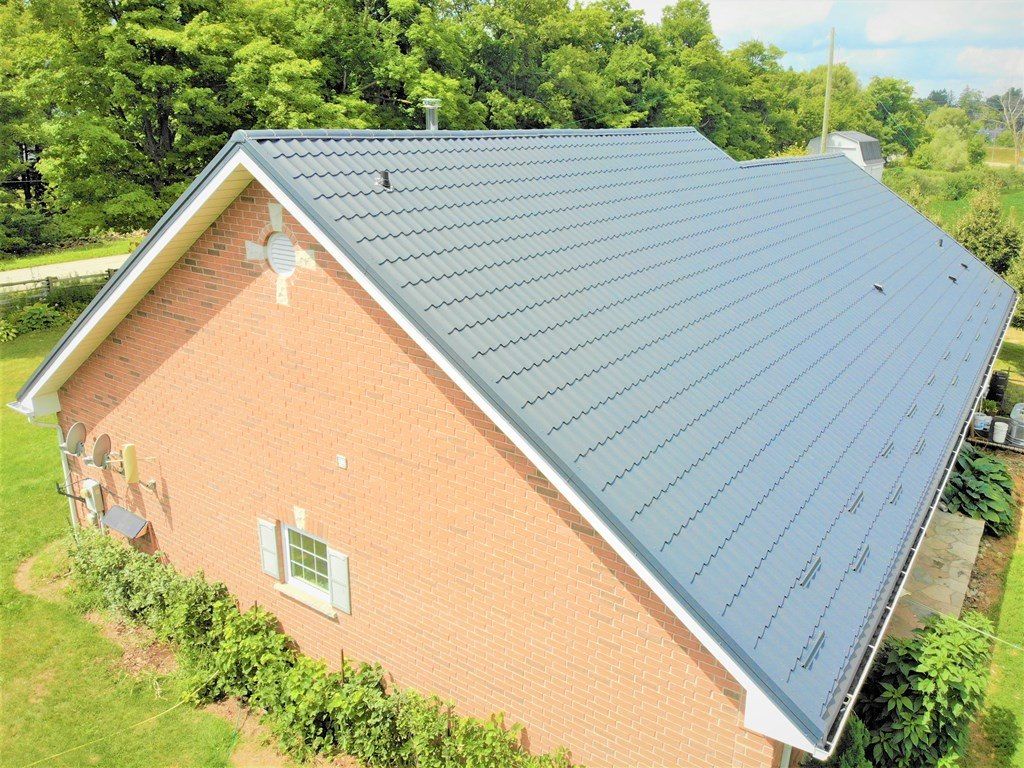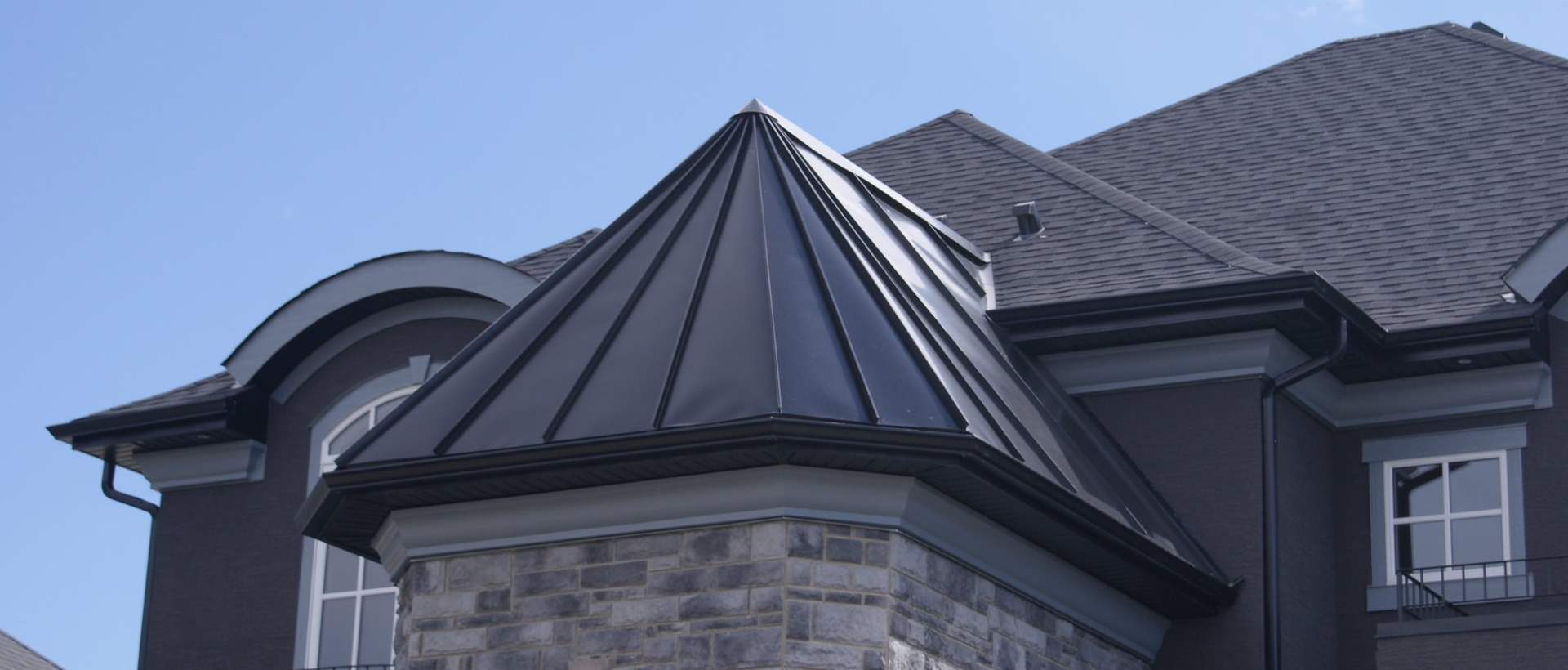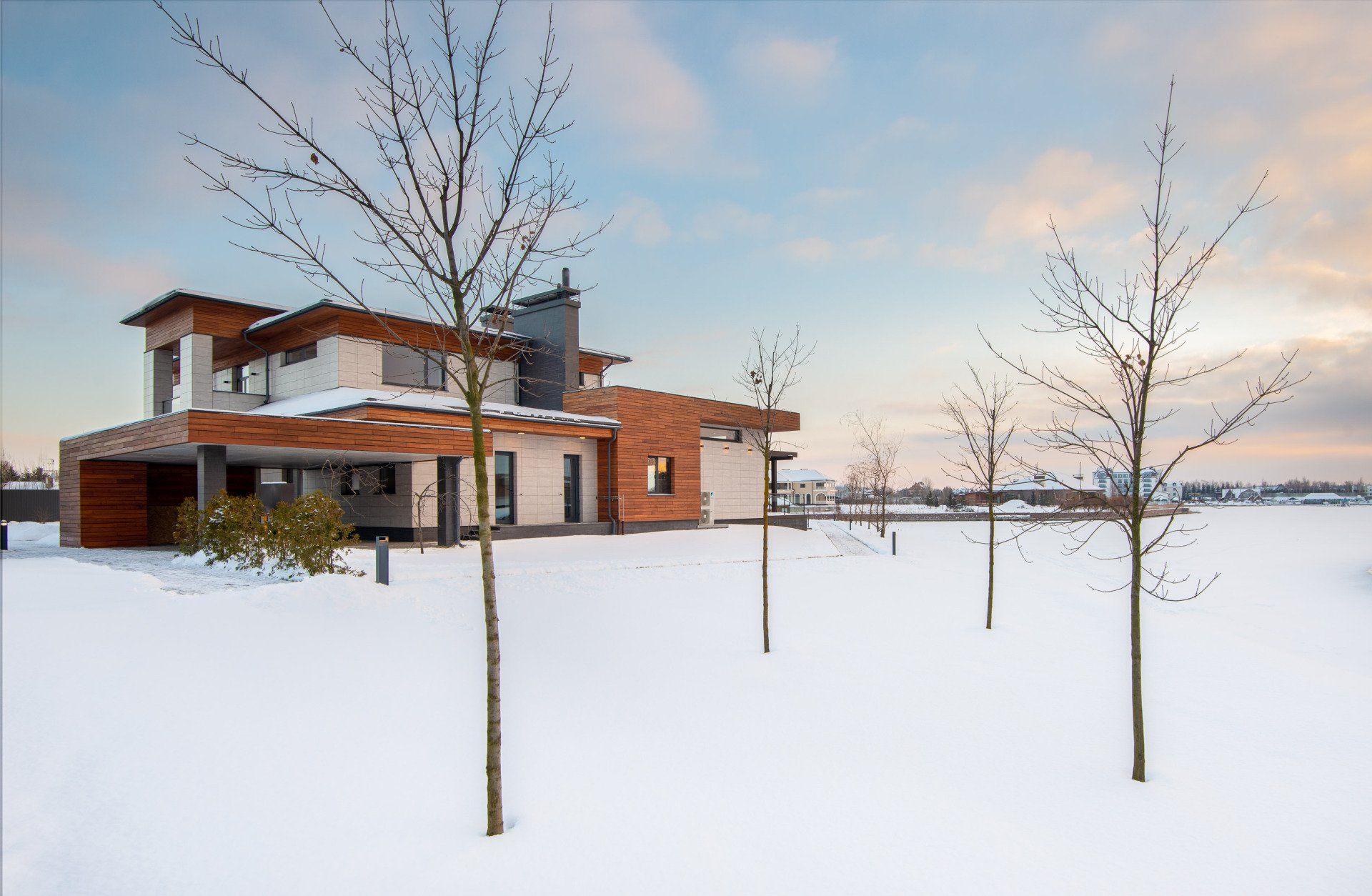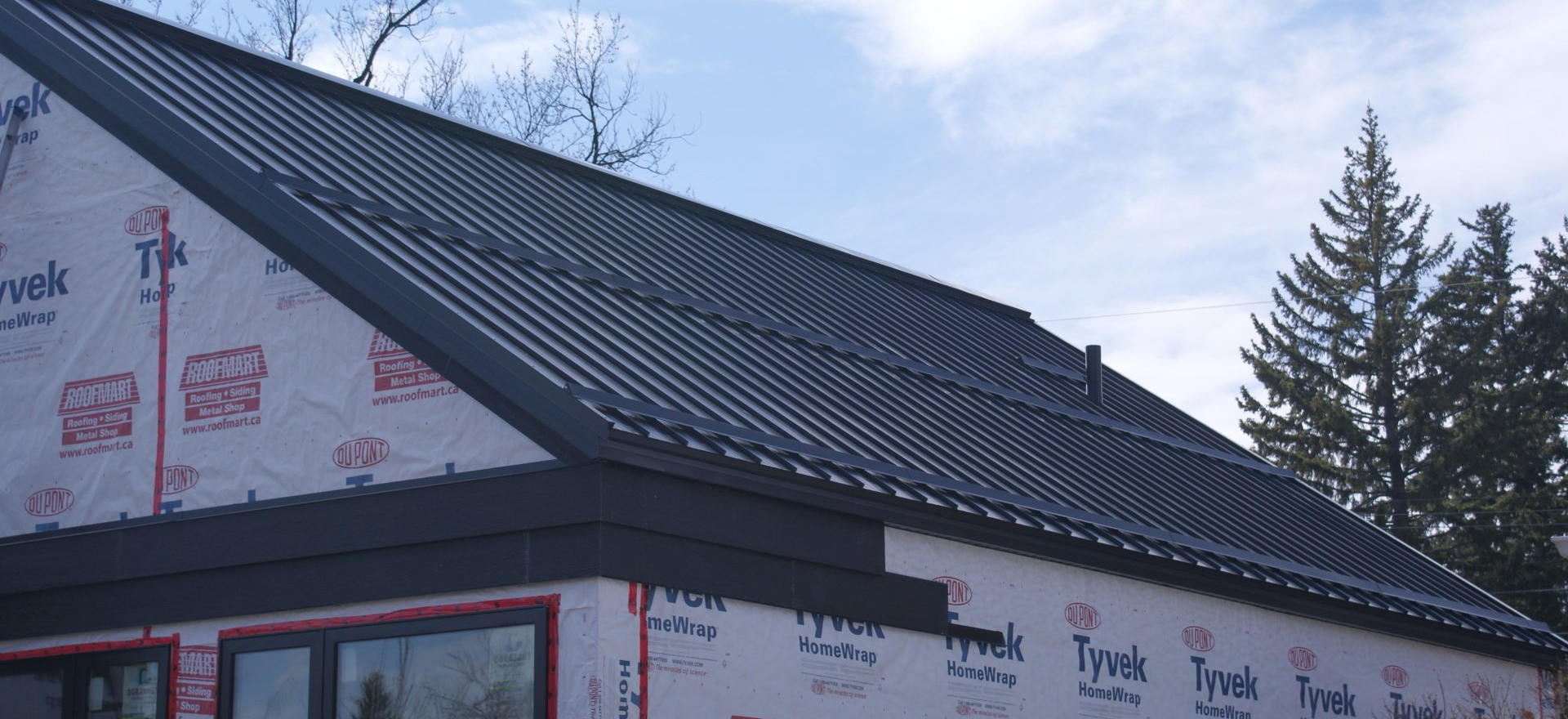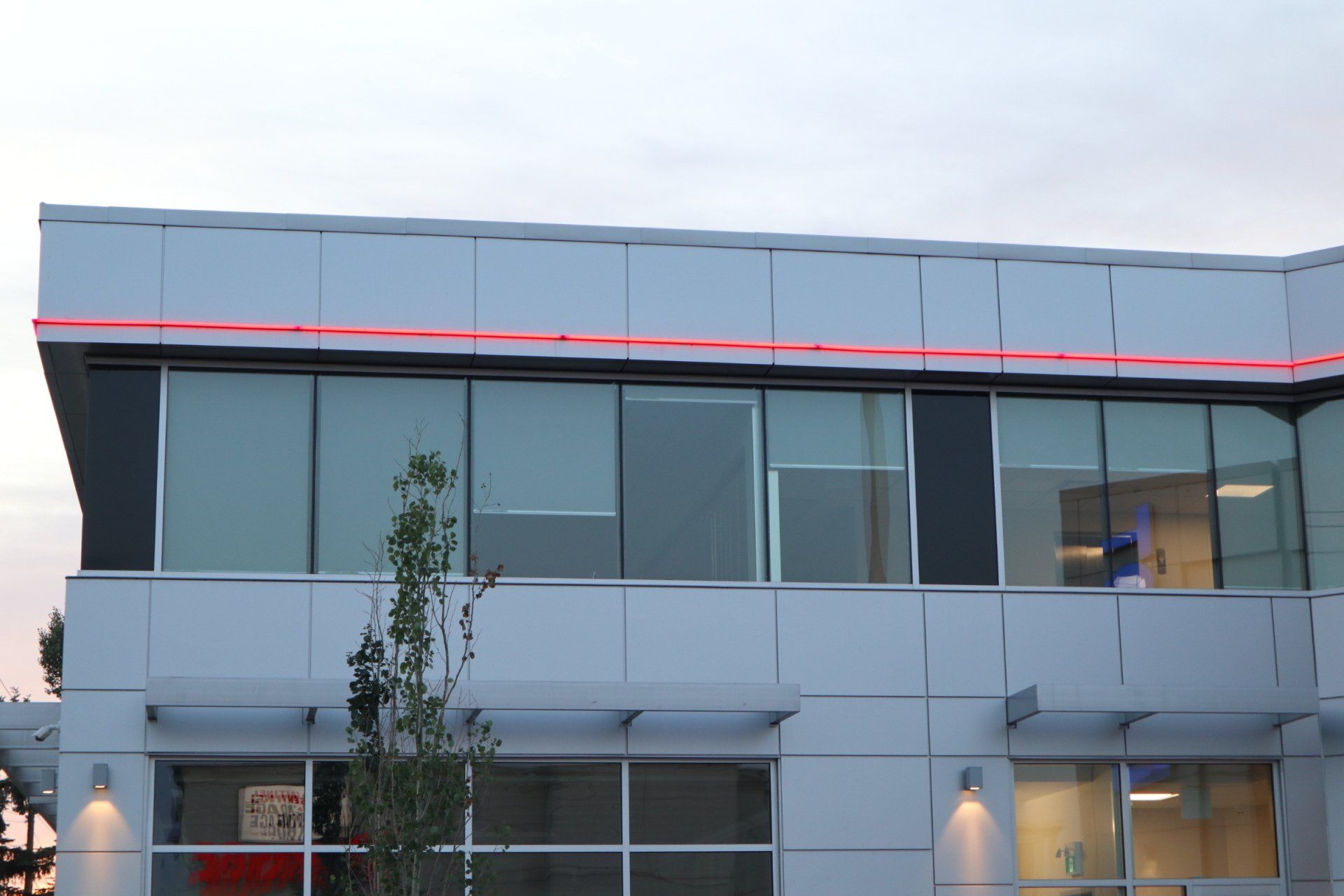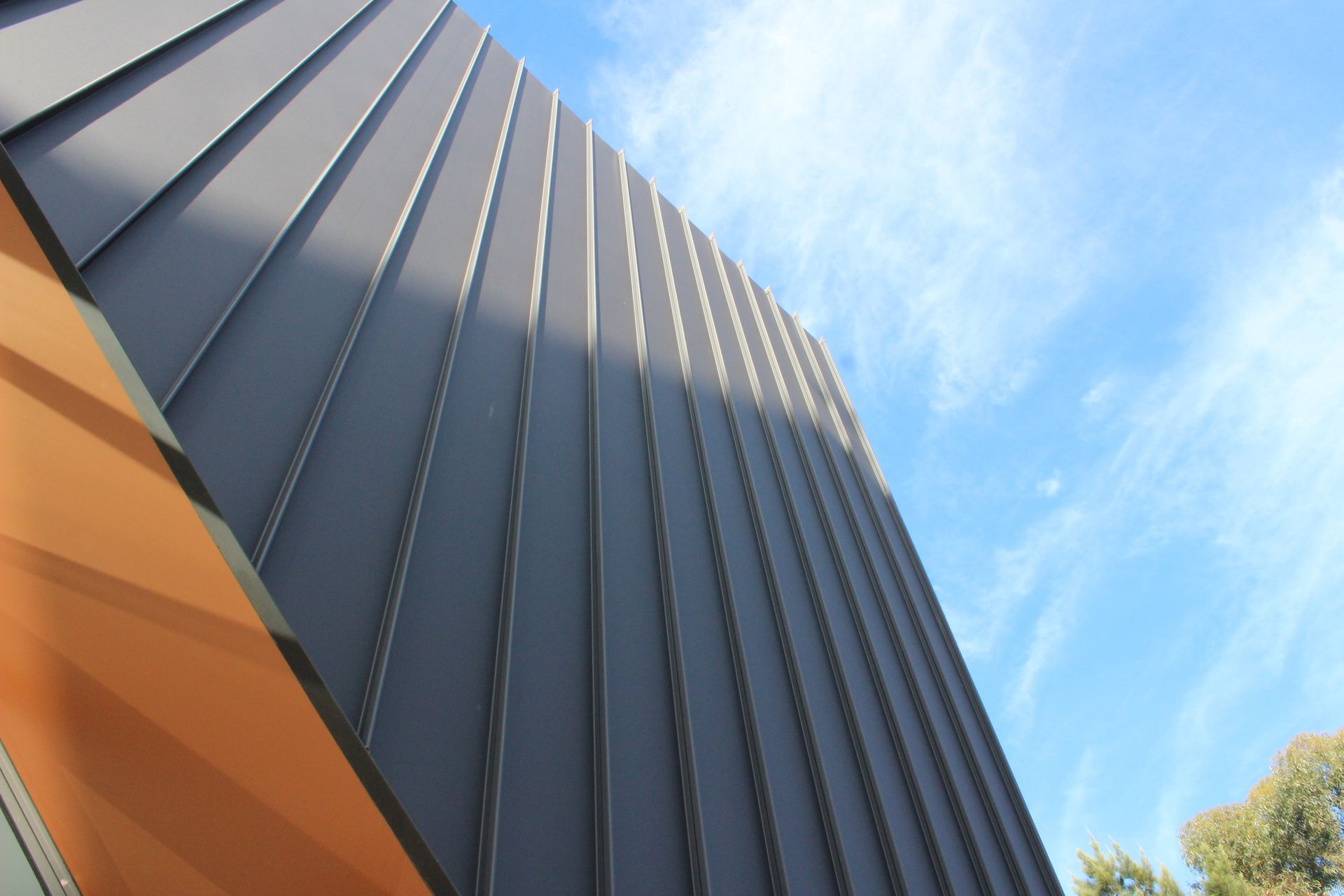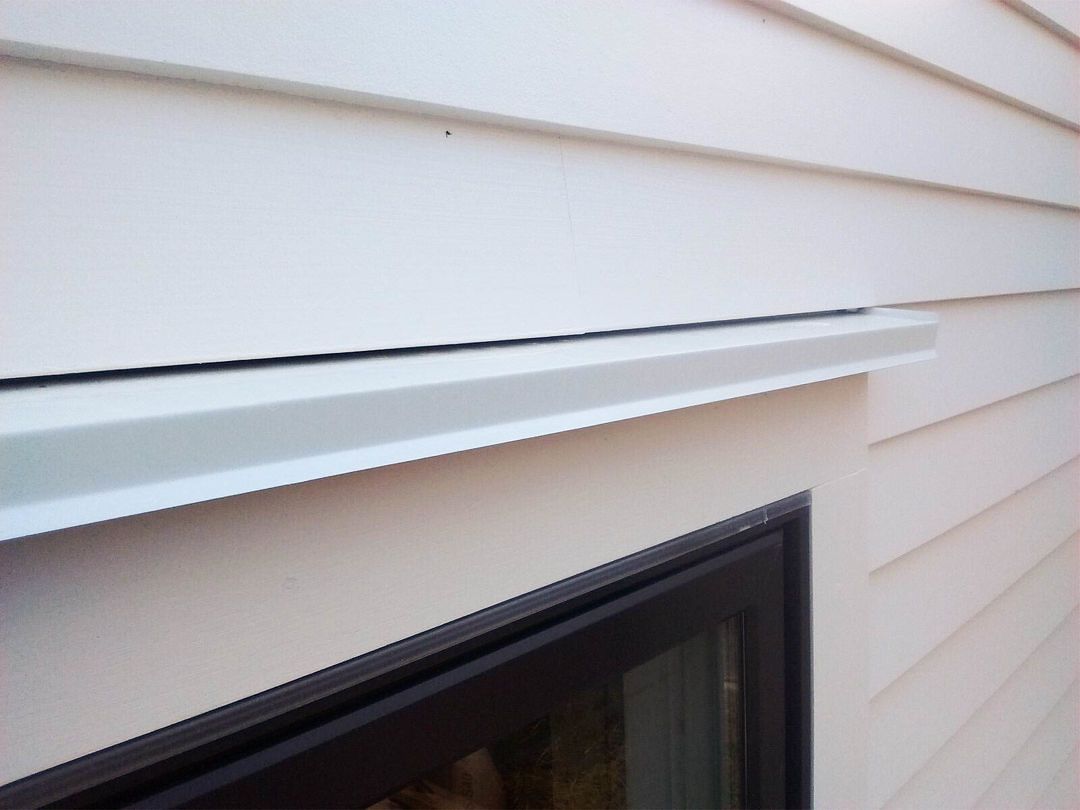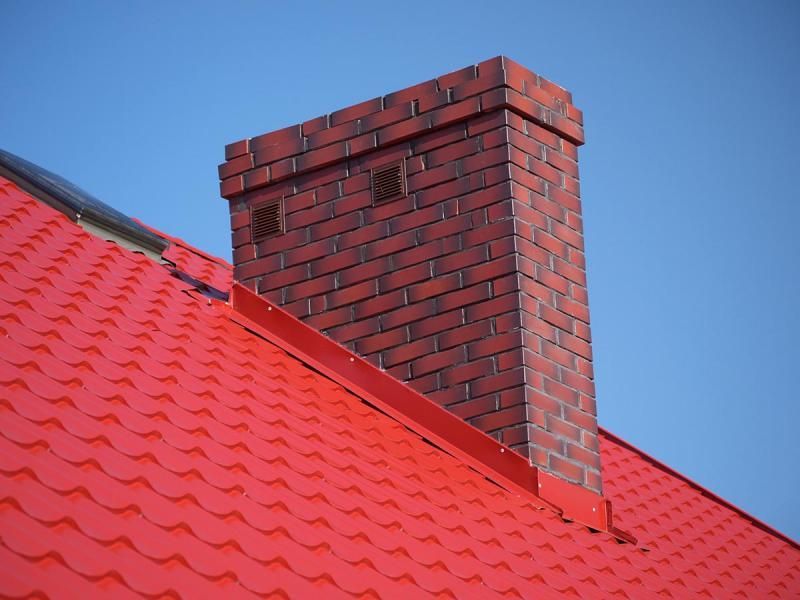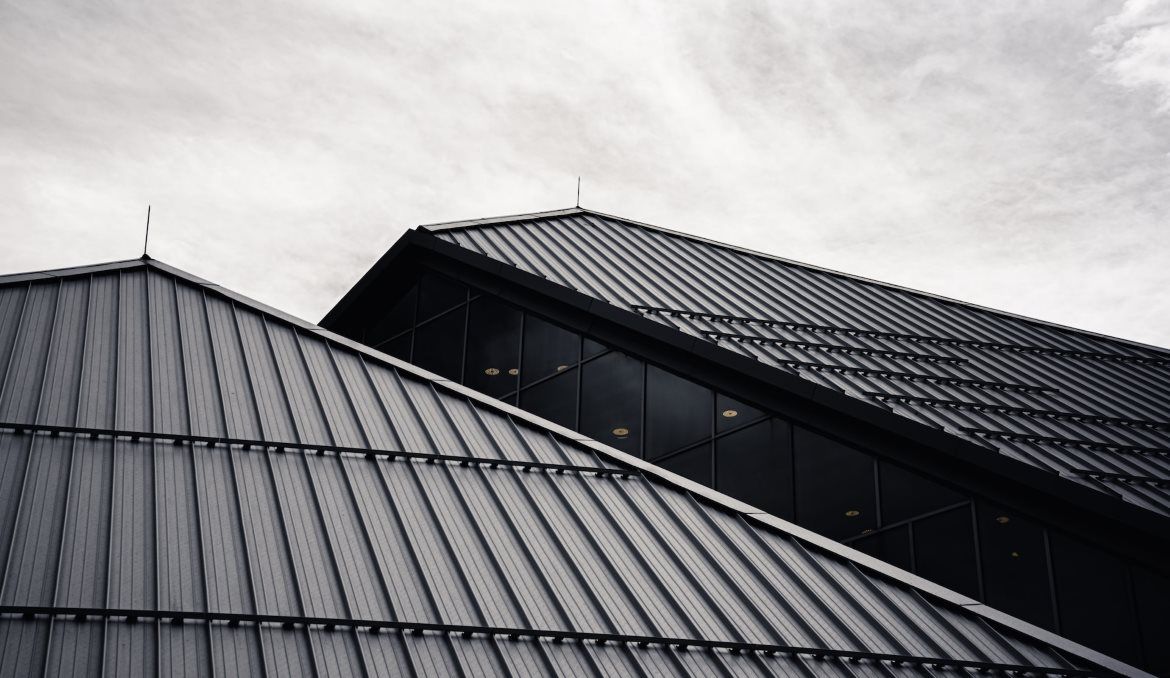Sustainability and Aluminum Composite Panels
Updated October 2023
An ecological mindset means always thinking of greener, more sustainable methods of achieving goals.
ACM (aluminum composite metal) panels are revolutionizing the design and construction aspects of global architecture. This sustainable construction material is lightweight, long-lasting, and durable, with a sleek modern appeal.
Read on to learn the benefits of ACM panels and how they contribute to LEED certification.
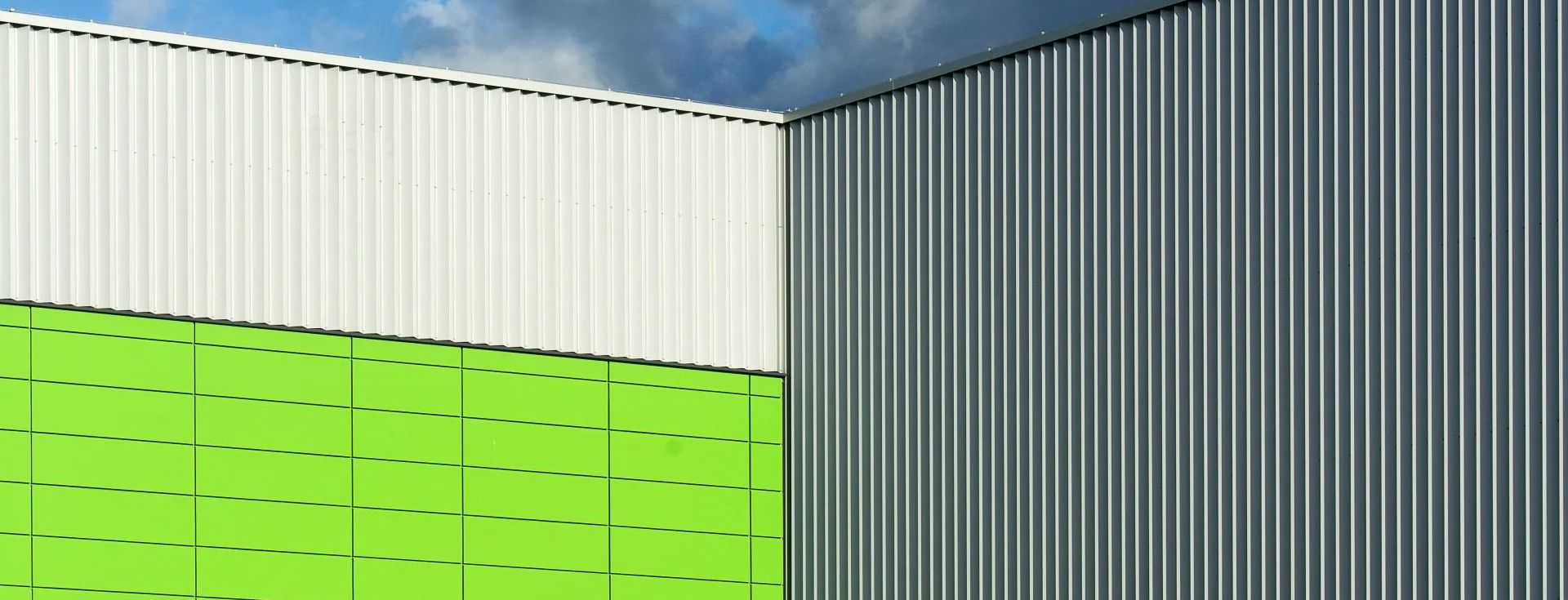
What are ACM Panels?
ACM stands for Aluminum Composite Material. ACM panels are essentially made up of two thin aluminum sheets bonded to a non-aluminum core. Combining these materials makes ACM panels versatile, sustainable, durable, functional, and an excellent choice for architectural cladding or interior walls.
A Brief History of ACM Panels
The first aluminum composite material was created in 1968 in Europe by Alusuisse of Zurich. Although commercially produced in Germany in 1969, the production of ACM didn’t come to North America until 1977. The first domestically produced ACM occurred in North Benton, Kentucky, in 1978, with the first building project, Spaceship Earth, which had its grand opening in 1982.
Aluminum was the first and remains the predominant skin for metal composite panels. Metal composite material (MCM) reflects newer skin metals such as copper, zinc, titanium, and stainless steel. Today, ACM is used worldwide, providing a sustainable solution for structure designs in various climatic and environmental conditions.
You’ll find ACM panels in various construction projects, such as interior and exterior applications, including cladding for exterior canopies, fascias, soffits, graphic displays, interior columns, and decorative elements in:
- Retail establishments
- Commercial buildings
- Healthcare facilities
- Recreation centres
- Educational institutions
- Industrial buildings
- Gas stations
- Car dealerships
- And more
Advantages of using ACM Panels in Sustainable Construction Practices
As the construction industry evolves to using more sustainable building materials, the benefits of using ACM panels are becoming more apparent, offering many advantages such as:
Advantage #1: Lightweight
ACM panels are lighter than solid aluminum, making them easy to install, work with, and transport. Their light weight also reduces the seismic force on a building's infrastructure.
Advantage #2: Durable and Long-Lasting
ACM panels are durable, making them ideal for outdoor and indoor use. They are UV and temperature-resistant and can withstand extreme weather conditions, making them perfect for cladding building exteriors. ACPs are suitable for architects or developers as they can endure 50 years or more, similar to most erected structures today.
Advantage #3: Fire Resistant
ACM panels have a fire-resistant core, making them an excellent option for buildings where fire safety is a concern. Note that ACM panels will melt at 650°C or more but can easily withstand temps as high as 300°C. Unlike other cladding options, ACM doesn’t give off unpleasant gasses or fumes that may harm humans or the environment.
Advantage #4: Low Maintenance
ACM panels don’t require maintenance, like painting or other forms of upkeep, making them low-maintenance options for construction projects. Pre-treated ACP sheets have a protective layer to prevent corrosion, making them rust-free. You only need water, soap, and a mild cleanser to thoroughly clean ACM panel surfaces.
Advantage #5: Color Options
You’ll find ACM panels in various colors and textures, allowing you to choose the perfect style and color for every project. They can even replicate the look of natural stone, metallics, or wood.
Advantage #6: Aesthetically Pleasing
Get a clean, modern look with ACM panels that enhance the appearance of any building. Choose the look that fits your aesthetic for a price that fits your budget.
Advantage #7: Cost-Effectiveness
ACM panels are a money-saving option for construction projects. Their built-in attachment systems are more cost-effective than other metal cladding installation methods. Reduced maintenance also contributes to their cost efficiency. And because they’re long-lasting, they save money on replacement expenses.
Advantage #8: Recyclable With Reduced Waste
ACM panels, made of entirely recyclable materials, are an environmentally friendly option for construction projects.
Advantage #9: High Functionality
The extreme versatility of ACM panels makes them ideal for various applications, such as:
- Interior wall finishes
- Cladding
- Partitions
- Machine coverings
- False ceilings
- Container construction
- Canopies
- Column covers
- In the signage industry, as a substitute for heavier, more expensive substrates
- And more
Advantage #10: Easy Installation
You can install ACM panels quickly and easily, making them a convenient option for construction projects.
Advantage #11: Energy Efficiency
ACM panels offer enhanced thermal performance, better insulation properties, reduced energy consumption, and lower utility costs, saving energy, reducing the carbon footprint, and reducing heating and cooling costs.
Advantage #12: Improved Indoor Air Quality
An ACM cladding system provides superior air quality to reduce the risk of mould and other harmful substances that can affect the quality of your health.
Key takeaways:
ACM panels offer many benefits for construction projects. For a durable, low-maintenance, lightweight, and cost-effective cladding option for your next building project, consider reaping the benefits of ACM panels.
Applications of ACM Panels
Due to the durability and versatility of this material, preferred by architects, real estate developers, and fabricators, ACM panels have a wide range of applications. Here’s a look at some of the interior applications of ACM:
Interior Applications
Although ACM is widely popular for its durability and aesthetic appeal in exterior applications, there are many reasons to use ACM for your next interior project, like being lightweight, energy-efficient, versatile to enhance both residential and commercial spaces, and easy to work with.
- Wall partition: ACM panels make great wall partitions, especially in public buildings or corporate offices. Unlike regular walls, these partitions withstand more abuse than their cement counterparts. ACM panels have additional non-structural elements between their structural parts (like aluminum sheets), so even if a part of an ACM panel breaks away from another, it would still be structurally sound.
- Sound barrier: ACM panels make excellent sound barriers in buildings. You’ll typically find these applications in urban environments where large buildings and skyscrapers cause a lot of noise pollution that can interrupt meetings, make sleeping difficult, and generally make life unpleasant. Acoustic panels control these issues by reducing ambient sounds and allowing music and audible speech to pass through.
- False ceiling: First introduced as roofing materials, the benefits of ACM panels soon became apparent in other applications, including false ceilings, which add space and improve aesthetics in an existing room. False ceilings are a great option when building something from scratch.
Exterior Applications
Aluminum composite materials (ACM) benefit building owners, architects, and contractors. Often called aluminum siding, ACM panels aren’t aluminum but rather an aluminum composite material. Here’s a look at some of the exterior applications of ACM:
- Curtain walls and cladding: ACM curtain walls, also known as aluminum composite cladding (ACP), can decorate walls, foyers, restaurants, shops, and other exterior and interior spaces. This is because ACM panels generally consist of sheets of metal topped with sheets of glass or another transparent panel. When building a new commercial building or home and looking to conserve energy and reduce your carbon footprint, consider ACM cladding — an eco-friendly material offering insulation while reflecting solar radiation; save on heating and cooling costs.
- Column covers and beam wraps: Contractors typically use ACM materials in conjunction with steel for beam wraps and column covers. The combination of aluminum and steel is optimal for structural strength and minimizing weight. Maintain stability while creating your desired look with ACM panels in various textures, colors, and depths.
- Signages: ACM panels are ideal for signs, kiosks, point-of-purchase displays, and more. They’re customizable to fit specific needs, whether curved, rounded, or other. Signs are instrumental in conveying essential information and establishing presence at an event, conference, or brick-and-mortar location.
ACM Panels and LEED Certification
LEED (Leadership in Energy and Environmental Design) certification acknowledges green building practices using qualifying building materials. It’s the most widely used rating system worldwide and applies to all commercial, residential, government, and education building types.
How do ACM Panels Contribute to LEED Points?
ACM panels qualify in three ways:
- Recycled content: To qualify, building materials must contain 10%-20% of recycled products. Most aluminum composite panels have 30% or more recycled material.
- Continuous lifecycle: ACM panels are 100% recyclable, meaning installation scraps stay out of landfills. Once ACM panels exceed their life expectancy and are ready for replacement, they go to recycling facilities, where workers melt them down to create new products.
- Reflectivity reduction: Aluminum composite panels are available in various colours and finishes that meet or exceed the minimum SRI (Solar Reflectance Index) value. LEED minimum requirements for roofs are an SRI of 29 with a slope steeper than 2:12 or a minimum SRI value of 78 for lower sloping roofs. ACM panels reflect the sun’s energy and reduce heat absorption to minimize the microclimate impact and avoid disrupting surrounding habitats.
Sustainable Attributes of ACM Panels
Aluminum composite panels are the preferred choice when moving toward sustainable practices in construction and environmentally friendly living because:
- They’re lightweight and as robust as steel but don’t lose their properties.
- 30% of recycled material goes into ACM panels' manufacturing and design process, making them 100% recyclable at the end of their life cycle.
- They significantly reduce energy expenses with their insulating and reflective qualities by decreasing the heating and cooling required.
- Weather resistant, climate adaptable, durable, long-lasting, and easy to maintain.
- ACM panels are cost-effective and have multi-purpose uses — clad existing buildings or feature them in new designs.
Safety Considerations During ACM PANEL Installation
ACM panels are lightweight, making installation easier and safer. They’re also available with different core materials and coatings. Aluminum composite panels with polyethylene (PE) core material can only be used internally or on two-floor buildings (or fewer) since their fire rating is lower than those with mineral core panels.
PVDF (Polyvinylidene Fluoride) coatings are a resin-base system providing weather and fire-resistant qualities, making ACM panels one of the safest building materials out there.
Phoenix Metals — Calgary’s Go-To Metal Supplier & Fabricator Since 1978
From magnificent skyscrapers to quiet, residential neighbourhoods, ACPs are changing the look and environmental impact of architecture. These sustainable construction materials are undeniably visually appealing, with benefits that go beyond eye-catching. Switch to aluminum composite panels today for long-term energy efficiency, reduced heating and cooling costs, lower energy bills, and a reduced environmental footprint.
Our Services
Our Products
All Rights Reserved | Phoenix Metals Ltd. | Created by CCC
